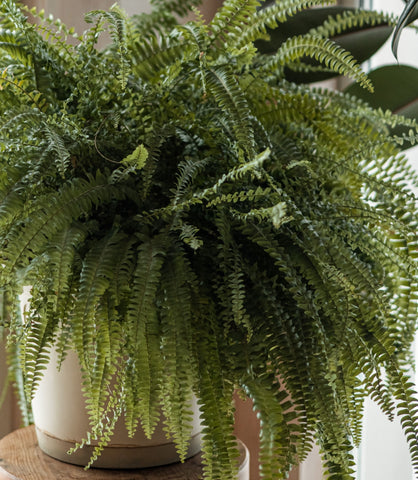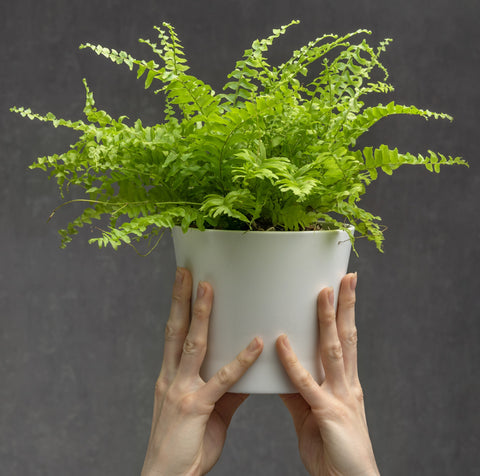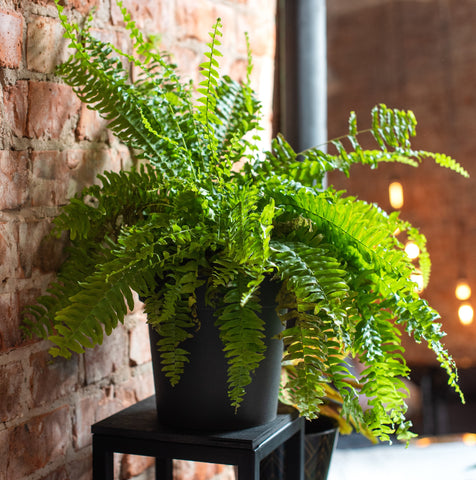Top 10 Tips For Boston Fern Care and Growth
Propagating your favorite plants in your home garden is a feat worth achieving, for one can witness the beauty of one’s favorite plants in close proximity. Several plants raise their hands to serve in our home gardens, which are quite a gem. However, there’s one gorgeous plant that is pretty attractive when grown in the backyards and home indoors, known as the Boston fern. This blog is about propagating, growing, and maintaining the Nephrolepis ferns.
What Is Boston Fern?
Known as Nephrolepis Exaltata in the scientific world, the plant also goes by sword fern among the laymen. It is local to the landscapes of America, but it’s quite a pick in the rest of the world where its local prerequisites are met. It is an evergreen Nephrolepis plant that can grow to a maximum of four feet, and being evergreen; it will go into dormancy during the frosty days, later to come alive again in the sunny days of Spring. The Boston fern plant looks like a serene picture of beauty and, as the name suggests, appears like a fern. Its leaflets have a frond-like appearance with a tinge of bright green. Gardeners worldwide prefer planting it in hanging planters to enhance its overall personality!

How To Care For A Boston Fern?
Now that we understand the Boston plant’s popularity in the global world of gardeners, it becomes essential to gauge its prerequisites to provide it with the best resources for thriving growth. Read further to know the intricacies relating to how to grow Boston ferns.
1. Location
These hanging ferns love a warm area filled with medium to low bright light, so it is best to keep the plants on a balcony, near a bright windowsill indoors, or shaded outdoors that receive more shade than direct sunlight. The plant needs one more specific thing to survive with flourishing growth - lots of humidity. We suggest you mist the plant using spray bottles to let it enjoy the additional humidity around. Some people also try to place the plant in humid bathrooms to give it all the humidity it seeks. The fern Nephrolepis is also not tolerable to intense heat and the chill of the cold.
2. Propagation
The Boston fern indoors requires cozy conditions to grow fast and happily in a well-draining soil conditioned with cocopeat to perform well with the microorganisms it hosts. When purchasing the plant online, let it stay in the floor planters it comes with, and then, one may re-pot it in another planter filled with the enriching mix of garden manure and potting soil.
3. Soil
You should propagate the fur plant in an enriching environment loaded with ample nourishment for its thriving growth. The plant loves the warmth and moisture of the loamy soil, which stays rich in nutrition and provides enough drainage. The soil should stay moist while getting drained at regular intervals, as too much moisture can cause the plant to run towards root rots.

4. Hydration
The Boston fern propagation will not require much hydration when you maintain its humidity preferences. The plant grows well with consistent watering whenever the top two inches of the soil seem dry. Also, don’t forget to regularly mist the hanging fern plant to fulfill its humidity requirements. The plant will naturally dormant in the winter so that one can withdraw the watering cycles to a certain limit.
5. Fertilization
The best part about growing potted ferns at home is that they are very lowkey and don’t require generous doses of additional nutrition boosters. You can gently feed them with a balanced chemical fertilizer in one to two months. Moreover, the plant is so low-maintenance that it will still flourish without fertilizers when provided with the best growing conditions.
6. Common Issues
One crucial part of propagating Boston fern is knowing how to tackle the plant's issues in its growing journey. Here are some Boston fern care guidelines to assist you in solving the general issues:
➜ The plant can witness browning of the leaves near its base, which is not a problem to worry about, as it is its natural way of regeneration.
➜ However, if the leaves turn brown around the edges, check the ambiance for excess dryness and lack of hydration. Further, its fronds can turn brownish when they are repeatedly touched.
➜ The plant tends to drop its leaves when not consistently misted and hydrated. Solve this underlying issue to clear any dropping leaves-related issues.
➜ When the leaves start fading, it is a common sign to shift the plant to a more shaded region, or the problem might also be a symptom of underwatering.
➜ Sometimes the fronds might turn yellowish, losing their original green aura. Increase the humidity around to settle this issue.
➜ If you catch some brown spots on the leave’s underside and white balls around the roots, these should not concern you, as they are a part of the plant’s healthy growth.

7. Pests & Diseases
Insects love our greenery so much that they chase the plants whenever possible. It is vital to grow lovely greenery to check for spider mites, mealy bugs, and other pests throughout the plant’s journey. These insects can also push the plants to go through several diseases. In such cases, treat the plant with natural pesticides for plants to overcome the issue and shield the plants from forthcoming pest attacks.
8. Pruning
The plant will respond best to regular trimming sessions, allowing it to grow with refreshed growths. Its often invasive growth can also make it look too much bushy, so it is best to clean its appearance with a branch cutter. We advise you to cut back from the frond’s edges instead of the plant’s top. One of the best times to trim is when the plant is being re-potted.
9. Overwintering
As we already discussed, the plant has a tendency to withdraw from the gardening world during cold days. One way to make its winter journey gentler is to bring it inside for overwintering. You can also let the plant stay outdoors with protective blankets wrapped around it.

10. Overall Growth
Concluding all this, the plant will grow best when it is propagated at a location where its local weather is imitated to a great extent. It will require well-draining soil that stays fit with nourishment with regular watering on visible dryness. The plant will do best in locations receiving light and filtered sunlight with regular grooming sessions!
What Are The Benefits Of Growing Boston Fern At Home?
Apart from looking like a hanging ball of elegance, the plant bestows other Boston fern benefits on us, too. Here’s a list:
➜ Cleaner Ambiance
Introducing Boston fern to your house will change how your lungs respond to the atmosphere around you. The fern plant benefits by cleaning the air from harmful toxins like formaldehyde, xylene, etc., that harmfully impact the body’s healthy response to oxygen.
➜ Less Dryness
The plant also enables more humidity in the ambiance with its seamless quality to remove the dryness around it. It often intensifies the humidity around with its own love for humid spots. The reduction in dryness removes the dried nature of our noses and skins. Some people may also experience sore throats, which are easily cured with the company of this plant.

➜ Added Elegance
The Boston fern is often known for its surreal appearance, which makes it a preferable plant for ornamentation. One can hang the plant indoors to create a dancing, dazzling aura. It can also be propagated in railing planters, where it will converse with the music of gravity. Wherever you grow it, the plant will look like an image of grace filled with positive aura and beauty.
Take Away:
If you are looking for a low-maintenance plant that will intensify the beauty of your ambiance while staying lowkey with its maintenance requirements, then the Boston Fern plant images will happily accept you as a plant parent. Propagate it at home with enough Boston humidity to enjoy the ferns benefits. The plant doesn’t take much to grow joyously with the least care and attention from its owners. What’s more? It is available at fairly reasonable prices on the online gardening store called Plantlane! You can now order it online by searching for the fern’s seeds or ferns botanical name, and it will reach you in a safe package through the convenience of online delivery! Happy gardening.
FAQs About Growing The Boston Fern
Ques: Where Did The Boston Fern Get Its Name?
Ans: The plant was among the primary candidates for propagation near Massachusetts in America. This is where the plant picked its name to be known as Boston fern for life.
Ques: How Will Boston Fern Help My Home Environment?
Ans: Apart from increasing the beauty quotient, the fern will also clear harmful toxins from the atmosphere around its propagation center, like cigarette smoke, formaldehyde, etc.
Ques: Where Should I Settle My Boston Fern?
Ans: The plant will stay joyous in sub-tropical regions with ample amounts of humidity. One can place it indoors near the bright windowsills, inside the humid bathrooms, and outside in the shaded spots.
Ques: Is It Tough To Propagate Boston Fern?
Ans: The Boston fern is a low-maintenance plant that requires minimal care and attention.
Ques: Where Can I Buy The Best Boston Fern in India?
Ans: The plant is readily available on the online lanes of Plantlane at affordable rates. It is known by Nephrolepis Exaltata, the fern scientific name and family.


